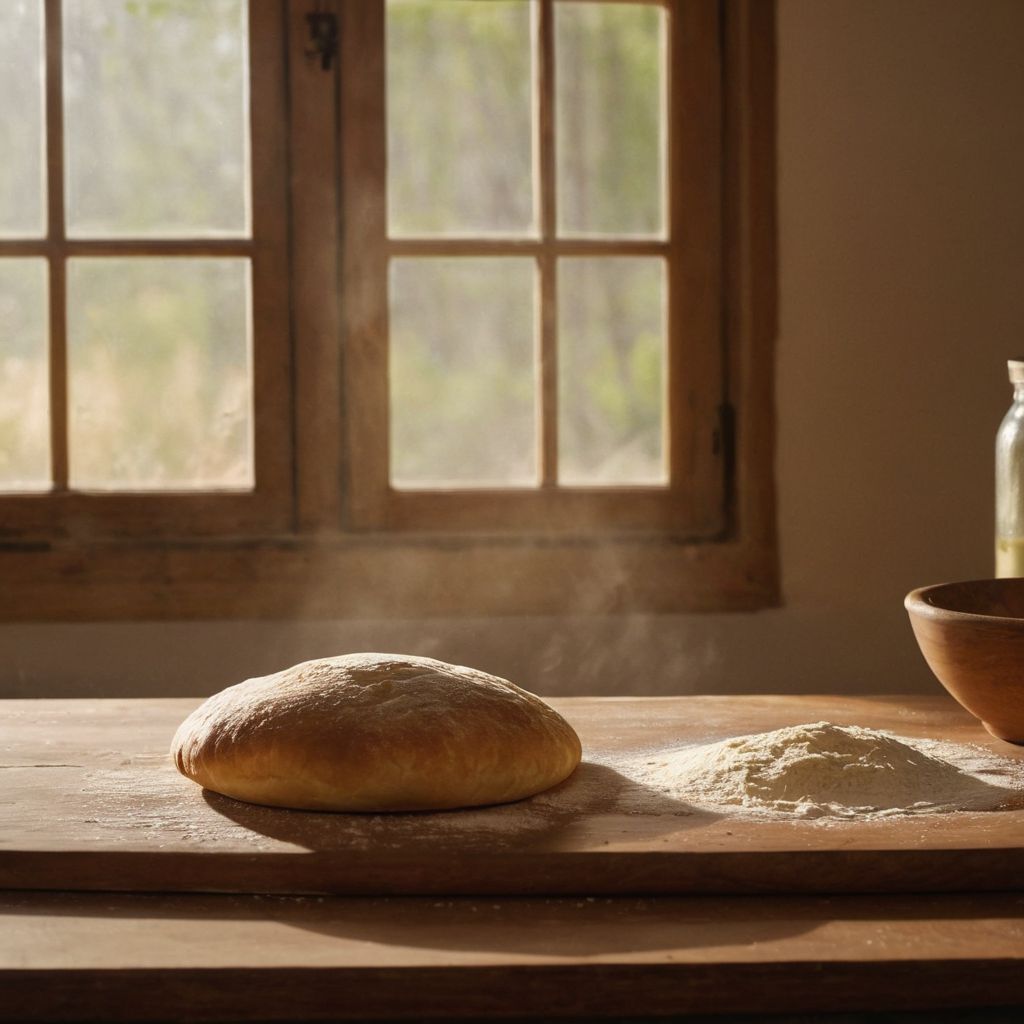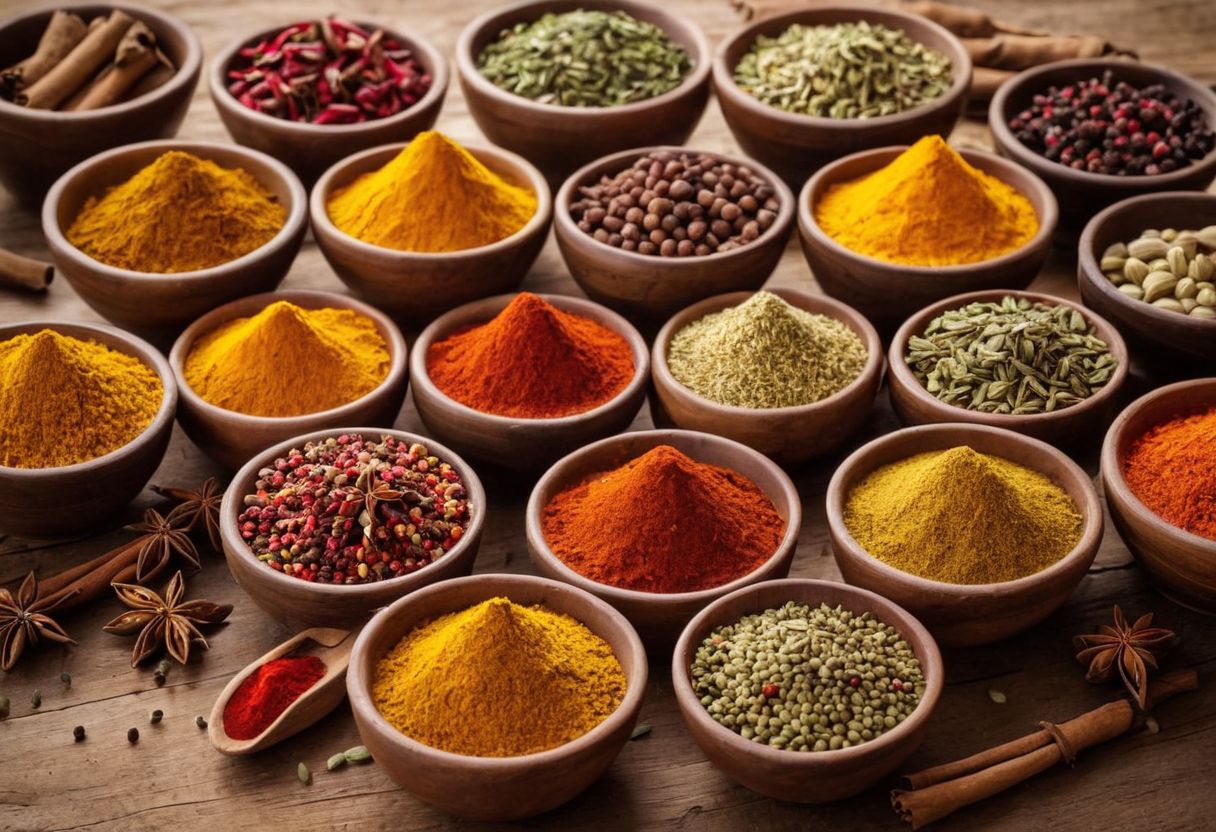Ever wondered why Indian rice dishes burst with such unique flavors and aromas?
Finding the right way to cook and pair Indian rice can be a challenge without proper guidance.
Indian rice dishes, particularly aromatic Indian rice, are enhanced by a variety of spices and can be paired with numerous dishes like Paneer Tikka Masala or Butter Chicken Curry.
In this blog, we’ll explore the rich diversity of Indian rice recipes, delve into the essential spices, provide tips on rinsing and soaking rice, and suggest perfect dish pairings to elevate your culinary experience.
Discovering the Richness of Rice Indian Recipes

Indian rice dishes are renowned for their incredible variety and complexity, making them a staple in both traditional and modern Indian cuisine. From the aromatic Basmati rice used in biryanis to the hearty grains in a comforting khichdi, each type of rice brings its unique texture and flavor to the table. These dishes not only offer a delightful taste but also embody the rich cultural heritage of India, showcasing regional spices and cooking techniques that have been perfected over centuries.
Exploring Indian rice recipes reveals a world of culinary creativity and innovation. Whether it’s a festive pulao enriched with nuts and spices or a simple, soothing porridge like pongal, rice is the foundation of many iconic Indian meals. The versatility of rice allows it to absorb and enhance the flavors of the ingredients it’s cooked with, making every dish uniquely satisfying.
For those eager to dive into the art of Indian rice cooking, understanding the basics is key. Selecting the right type of rice, mastering the cooking process, and pairing it with the right spices are all crucial steps. This section will guide you through various Indian rice recipes, offering insights into how these dishes can be a central part of any meal, celebrating the diversity and richness of Indian culinary traditions.
Mastering the Art of Indian Pilaf

Indian pilaf, or pulao, is a celebrated dish in Indian cuisine, known for its delicate balance of flavors and ingredients. The process of making pilaf involves sautéing rice in ghee or oil to make the grains less sticky, then cooking it with a mixture of spices, vegetables, or meats. This technique ensures that each grain of rice is infused with the aromatic spices, creating a dish that is both flavorful and visually appealing.
To master the art of making Indian pilaf, start with high-quality basmati rice which is known for its long, fragrant grains. The rice should be washed thoroughly and, in some recipes, soaked to achieve the perfect texture. Common spices used include cumin, cloves, and cardamom, which are sautéed with onions and other aromatics before adding the rice. The result is a fluffy, aromatic dish that can stand alone or complement other flavors in a multi-course meal.
Spices: The Heartbeat of Indian Rice Dishes

Spices are undoubtedly the soul of Indian rice dishes, transforming simple ingredients into extraordinary meals. Essential spices like cumin, cardamom, and turmeric are often used to start the cooking process, releasing their flavors into the oil through a technique known as tempering. This method maximizes the aroma and taste of the spices, which permeate the rice as it cooks.
Each spice offers a unique contribution:
- Cumin adds a nutty, earthy flavor.
- Cardamom provides a hint of sweetness and complexity.
- Turmeric gives a vibrant color and a warm, bitter taste.
Understanding how to balance these spices can elevate a simple rice dish to a celebration of flavors, making it a centerpiece of any Indian meal.
Perfect Pairings: What to Serve with Indian Rice
Pairing the right dishes with Indian rice can enhance both the flavors and the overall dining experience. Rich, spicy curries like chicken tikka masala or lamb rogan josh complement the subtle flavors of basmati rice beautifully. The rice not only serves as a base to soak up the delicious sauces but also balances the intensity of the spices.
For a complete meal, consider these pairings:
- Butter chicken pairs wonderfully with saffron rice, adding richness and a touch of luxury.
- Dal Tadka, a lentil curry, goes well with jeera rice, where the cumin seeds in the rice highlight the earthy flavors of the lentils.
These combinations ensure that each bite is harmonious and satisfying, making the meal memorable.
Why Rinsing Indian Rice is Essential

Rinsing Indian rice before cooking is not just a tradition; it’s a necessary step to ensure the quality of your dish. This process, primarily done with white rice, removes excess starch from the surface of the rice grains. By doing so, it prevents the rice from becoming overly sticky and helps achieve that distinct, separate grain texture which is highly desired in dishes like biryani or pilaf. The rinsing process is simple yet effective: place the rice in a bowl, cover it with water, agitate gently, and then carefully pour off the cloudy water. Repeat this until the water runs clear.
The importance of rinsing rice can be understood better when considering the science behind it. Rice grains are coated with a layer of starch known as amylopectin, which can cause grains to stick together when cooked. Rinsing washes away much of this surface starch and any impurities or loose rice flour that might have been left from the milling process. For an optimal cooking experience, use a fine mesh sieve under cold running water to ensure all grains are thoroughly washed. This step not only improves the texture but also enhances the overall appearance of the cooked rice, making it more appealing in any dish.
To Soak or Not to Soak Indian Basmati Rice

Deciding whether to soak Indian Basmati rice can significantly affect the final texture and flavor of your rice dish. Soaking basmati rice is particularly recommended because it allows the rice to absorb water prior to cooking, which results in grains that are more elongated and less likely to break during cooking. For white basmati rice, a soaking time of at least 20 minutes is suggested, while extra long basmati varieties benefit from a 30-minute soak. This pre-cooking hydration helps the rice cook more evenly and enhances its inherent aromatic qualities.
Beyond improving texture and flavor, soaking basmati rice also reduces the overall cooking time by about 20%, a significant advantage when preparing meals in a hurry. The absorbed water expands the grains from within, speeding up the cooking process and helping retain the rice’s aromatic compounds, which are often lost in longer cooking. For those looking to achieve the perfect fluffy and fragrant basmati rice, soaking is a step that shouldn’t be skipped. It’s a simple preparation that yields noticeably better results in your final dish.
Creative Uses for Leftover Indian Rice

Transforming leftover Indian rice into a new meal can be both fun and flavorful. One popular choice is to make Indian fried rice by sautéing the rice with onions, garlic, and whatever vegetables you have on hand. Add some spices like turmeric, cumin, and coriander for that authentic taste. This dish not only uses up your leftovers but also gives you a nutritious meal in no time.
Another creative idea is to mix leftover rice with some eggs, cheese, and spices, and then fry them up to make rice pancakes. Serve these with a spicy chutney or yogurt to add an Indian twist to your breakfast or snack time. These pancakes are not only tasty but also a great way to add protein to your diet.
Storing Indian Rice: Best Practices
Storing Indian rice correctly is crucial for maintaining its freshness and quality. To ensure the rice remains free from pests and retains its flavor, store it in airtight containers. These containers keep out moisture and bugs, which are common problems in many Indian households. Opt for containers made of glass or heavy-duty plastic for the best results.
Location also plays a vital role in preserving the quality of Indian rice. Keep your rice containers in a cool, dry place away from direct sunlight. Here are some additional tips:
- Avoid areas near stoves or sinks to prevent heat and moisture exposure.
- Consider the use of silica gel packets in the storage area to absorb any excess moisture.
- Regularly check the rice for any signs of spoilage or infestation, which can occur even in well-sealed containers.
Explore Rice Indian Dishes with Indulge‘s Culinary Tours
If you’re captivated by the rich flavors of Indian rice dishes and wish to delve deeper, consider joining one of INDULGE‘s curated food tours in Zurich. These tours not only introduce you to the traditional and modern adaptations of Indian rice cuisine but also provide a hands-on learning experience guided by culinary experts. Participants gain practical knowledge on selecting the right spices and perfecting rice cooking techniques, making each dish a celebration of flavor and tradition.
The benefits of participating in INDULGE‘s culinary tours extend beyond mere taste exploration. Here are a few advantages:
- Engage directly with professional chefs who specialize in Indian cuisine, gaining insights that are not readily available through books or online.
- Experience the vibrant food scene of Zurich, where global culinary traditions meet local flavors.
- Learn about pairing different Indian rice dishes with appropriate wines and other beverages, enhancing both the dining experience and your culinary skills.
Frequently Asked Questions
What kind of rice is Indian?
Indian rice dishes commonly use aromatic types like Basmati rice, which is renowned for its fragrant, long grains. Basmati rice is a staple in many traditional Indian rice dishes such as biryanis and pilafs.
What is an Indian rice dish called?
An Indian rice dish can be referred to as pilaf, or pulao. This dish involves sautéing rice in ghee or oil with a mixture of spices, vegetables, or meats, which infuses the rice with aromatic flavors and creates a visually appealing dish.
What are the names of rice in India?
In India, rice varieties are often referred to by specific names depending on their type and use. Common names include Basmati, which is used in biryanis and pilafs, and other types like the grains used in khichdi. Each type of rice is known for its unique texture and flavor.








